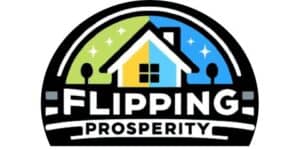When flipping houses there are hundreds of choices and decisions you have to make along the way but no decision will have a greater impact on your success or failure than choosing the right house to flip.
As a new house flipper though you might be wondering what goes into and how to choose a house to flip?
When first starting out, it certainly took me some time to figure out how to choose a house to flip and what to look for. After years of trial and error though I finally came up with the below criteria that I use every time to help me determine whether or not a house would make a good flip.
First Things First
Before we go any further it’s important you understand the below key concepts when looking for the right house to flip.
- There are No Perfect Houses – When flipping houses it’s important to remember that there is no such thing as the perfect house. Each house you look at will have its pros and cons. So don’t panic if the house has a few negatives, after all when house flipping figuring out how to turn those negatives into positives can often lead to your biggest profits.
- Take Your Time – Don’t forget that flipping houses is a numbers game and this is especially true when looking for the right house to flip. When you’re looking for the right house to flip you need to be prepared to look at as many houses as it takes to find the right one. Remember the more houses you look at, the better your odds are of finding a great property to flip. Also when first starting out, looking at a lot of houses can help to hone your skills when analyzing property.
- Have Multiple Sources for Property – When trying to find a house to flip it’s important to have as many sources for property as possible. Having multiple avenues for property will help to ensure you always have plenty of properties to look at even if one source of property dries up. Some great sources for potential properties to flip include the MLS, foreclosures, estate sales, auctions, sheriff sales, wholesalers, and other flippers.
How to Choose a House to Flip
While there are many ways to choose a house to flip, the below criteria is what I personally use when determining whether a house would make a good flip or not.
Property Location
When figuring out how to choose a house to flip one of the first things you need to look at is the location of the property. In real estate location is one of the most important elements to consider. Because the location is the one aspect of a home you can’t change but it can be one of the biggest drivers of desirability.
When considering the location of a particular house it’s important the home be located in a desirable area that people want to live in. This is important because no matter how nice you make the home if people don’t want to live in the area you’re going to struggle when trying to sell the house.
Look for homes when flipping that are located in desirable school districts, nice neighborhoods, and close to shopping and entertainment.
Also, don’t forget to look at what’s immediately around the property. When considering a house I always make sure the surrounding homes are nice and well cared for and that the home I am looking at is not next to or has a view of anything undesirable.

How to Choose a House to Flip – Inspecting the House
Once I have determined the potential flip is in a good location I will then turn my attention to the house itself.
Before I start to think about all the things I plan to update or change I first look at the bones of the house. Because nothing will eat up house flipping profits quicker than major property condition issues throughout the home.
When first walking through a home I will always check a few key areas to make sure the home has good bones and doesn’t need major repairs that will be cost-prohibitive.
Items to Inspect When First Walking Through a Potential House Flip
- Look at the foundation of the home, making sure there is no major cracking and there is proper support for the foundation of the home.
- Inspect the stone or brickwork on the house to ensure it is not pulling away from the house and doesn’t have any major cracking or separating issues.
- Check the grading of the property. Is the grading of the property draining away from the house? Does the property have proper drainage?
- If the property has a crawl space make sure its dry and that all floor joists and flooring appear to be in good condition.
- When walking inside the home watch out for uneven floors.
- Look for any evidence of termites or wood rot.
- If the property has a basement make sure it’s dry and the basement walls are in good condition with no major cracking or bowing.
- Inspect the plumbing and electrical systems of the house to ensure that no major overhauls or updates will be necessary.
- Look for any inferior additions or repairs that don’t look up to code that might indicate unpermitted work.
- If the home has a septic system ensure that it is in good working order to the best of your ability.
- Check out the HVAC on the house, does it work and how old is it?
- Know what utilities are connected to the property, for example, is the house connected to city water, or does it have well water. If it’s well water is the system in proper working order and has the water been tested for contaminants.
- Always make sure to inspect the attic to ensure that all roof trusts and decking are in good condition and that the ceiling joists are free from damage.
While all of the above problems can be fixed if you throw enough money at them, usually they are to cost-prohibitive to repair and still turn a nice profit.
With that being said though we certainly have bought homes that needed some of the above items repaired but we made sure that those needed repairs were priced into the purchase of the home when we bought it.
Also when analyzing the home I am looking for things that can be saved that don’t need to be replaced. For example, if the home already has a good roof on it, or a newer HVAC I know those are things that I won’t have to replace which will help to keep the cost of the rehab down and the profit ups.
Lastly, when inspecting a home I will look for ways that I can add value to the home. After all, you make money flipping houses by updated and repairing the home so you can sell the home for more than you paid for it.
While the list is endless a few updates and repairs you can make to a home to increase its value include interior and exterior paint, new flooring, updated kitchen and baths, updated electrical and plumbing fixtures, and improved curb appeal and landscaping.
How to Choose a House to Flip and Potential Profit
After I have determined the home is located in a desirable area and the condition of the home is satisfactory, I will then turn my attention to the potential profit the home offers.
While I would have already run some quick numbers in my head before even going to look at the property. Once the home itself checkouts I then perform a detailed market analysis on the home to ensure that there is enough potential profit in the flip to make it worthwhile.
While this profit number can be different for everyone, when analyzing the potential profit of a home I am usually looking for at least a 30% profit margin.
While I have flipped houses for more and less than this. For me to be interested in the home there usually needs to be at least a 30% profit margin unless the flip is going to be easy or needs very little work.
Want to know how I perform a house flipping market analysis on a home? Check out our article “How to Perform a House Flipping Market Analysis“.
Recent Posts
Your bedroom is more than just a place to sleep; it's a personal sanctuary where you can unwind, relax, and recharge after a long day. Whether working with a small bedroom or a spacious suite,...
Are you ready to breathe new life into your living room? If so, look no further than modern living room colors, as they can transform your space from drab to fab. As the heart of the home, the...

